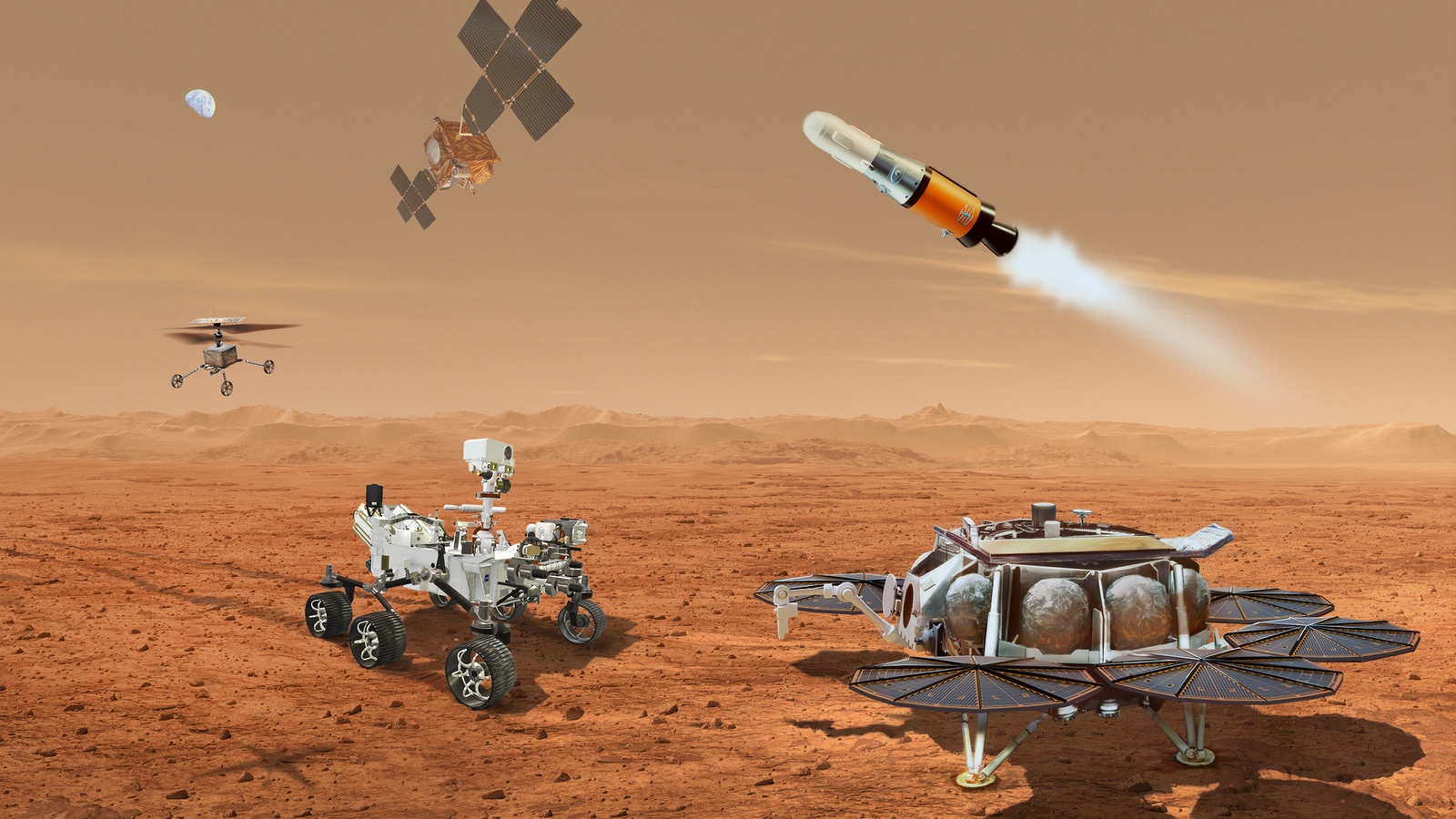WASHINGTON — House appropriators have announced their full funding for NASA’s Mars Sample Return program despite ongoing issues, but they are halting the agency’s collaboration with a European Mars mission.
This week, House appropriators released the report that accompanies the commerce, justice and science (CJS) spending bill for fiscal year 2024. The bill, which allocates $25.366 billion for NASA, had been delayed for over three months since being marked up by an appropriations subcommittee in mid-July. The full appropriations committee had not taken up the bill or published the associated report, which provides more detailed information on spending levels and policy direction.
The delayed release of the report coincides with the full House’s upcoming consideration of the bill, which won’t involve an appropriations committee markup and is likely to take place in mid-November. The House Rules Committee is currently accepting amendments for the bill, with consideration scheduled during the week of November 13.
The most significant difference between the House and Senate bills involves NASA’s Mars Sample Return (MSR) program. The Senate bill only provided $300 million for the program, less than a third of NASA’s $949.3 million request, and instructed NASA to develop a funding profile for MSR that costs no more than $5.3 billion, or explore options to scale down or rework the program, facing cancellation if necessary.
On the other hand, the House report fully funds MSR at $949.3 million and directs NASA to request the necessary funding in 2025 to ensure the MSR sample retrieval lander and Earth return orbiter missions launch by 2030.
The report, however, takes into account the “pending Independent Review Board’s results.” The board concluded its work in September, finding a “near zero probability” of MSR staying on track with its cost and schedule. It also determined that the overall program would cost between $8 billion and $11 billion, significantly exceeding the $5.3 billion threshold mentioned in the Senate report.
The funding allocated for MSR in the House bill has implications for other NASA programs. The House bill sets aside $7.38 billion for NASA science programs, slightly more than the $7.341 billion in the Senate bill. However, the House bill reduces funding for Earth science, astrophysics, heliophysics, and biological and physical sciences compared to the Senate bill, which had already made cuts in most cases from the agency’s request.
The House report does not provide much direction regarding Earth science, astrophysics, or heliophysics programs. Nevertheless, the proposed cut prompted Mark Clampin, director of NASA’s astrophysics division, to consider reductions in operating budgets for the Chandra X-Ray Observatory and Hubble Space Telescope on October 13.
Interestingly, while the House bill fully funds MSR, it blocks a much smaller expenditure for another Mars program. The report states, “The recommendation does not support the requested funding for the Rosalind Franklin ExoMars rover,” referring to proposed NASA support for the European Space Agency mission that terminated its cooperation with Russia last year.
The negotiations for that support are still ongoing but would likely involve thrusters for a new landing platform for the rover, radioisotope heating units, and a launch. NASA’s 2024 budget proposal didn’t specifically allocate funds for that cooperation but included it under the “Mars Future Missions” program line, which also encompasses planning for a receiving facility for samples brought back from MSR missions. NASA requested $49.9 million for Mars Future Missions in its budget proposal.
Regarding the receiving facility, the House report provides specific language, instructing NASA to prioritize proximity to the current curator for all NASA-held extraterrestrial samples by locating the new facility within 30 miles (50 kilometers) of the Johnson Space Center, which currently houses the curator. NASA hasn’t chosen a potential location for the facility yet, but in the budget proposal, it stated that the facility must have a Biosafety Level 4 rating and could potentially be part of an existing government facility.
The House bill also trims funding for space technology and space operations, but the reductions are smaller compared to the Senate bill. The section of the report focusing on space operations does not mention funding levels for the commercial low Earth orbit development (CLD) program, which the Senate bill fully funds. However, it does provide the $180 million requested by NASA for an International Space Station deorbit vehicle.
The House bill fully funds NASA’s exploration account, which includes the Space Launch System, Orion, ground systems, and other capabilities such as the Human Landing System and spacesuits.


